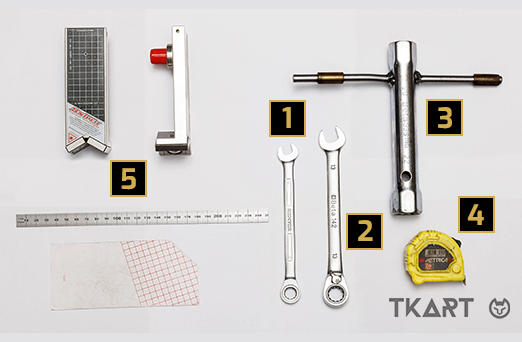Frequent Searches
Frequent Searches
The toe, that is the angle formed between the front wheels and the longitudinal axis of the kart, is a fundamental parameter to determine the behaviour of a vehicle both on straights and bends, which is why it is important to adjust it correctly to have a good feeling with the kart and maximise its performance. With the article “Tecnique - The toe”, we have explored all the theoretical details concerning this characteristic geometry of the front axle, while in a dedicated "Doctor TKART” we described how to adjust the trim with the aid of the specific discs.
However, in this guide we show how to check and adjust the toe angle using a laser measurement kit. An instrumentation that allows, for the same time taken with respect to the same activity performed with the toe discs, also to prepare further checks in order to further refine the set-up of the kart.
N.B. The activities described below are valid for any type of kart: Mini, Junior/Senior single speed and Junior/Senior with gears.

To check the toe of the front wheels it is necessary to place the laser pointers (regardless of the fastening system they have, magnet or flange) directly on the machined part of the spindle pin. To do this, first of all you have to position the vehicle on the trolley and make sure that the chassis is parallel to the ground (to be sure of this, we have placed the chassis on a surface, but it is not essential). Then all the components in this area must be removed (even as a block without dismantling them individually): wheels, hubs (and any thicknesses), disc/disc holder and brake calipers. In our case, the object of the toe adjustment will be a chassis in a direct-drive configuration, therefore without a front braking system. This allows us to speed up this phase by a couple of minutes, compared to the same activity carried out on a shifter kart, since it will only be necessary to remove the front wheels/hubs.